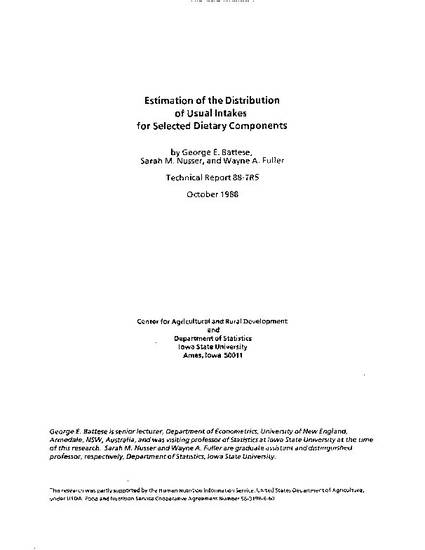
Unpublished Paper
Estimation of the Distribution of Usual Intakes for Selected Dietary Components
CARD Technical Reports
Publication Date
10-1-1988
Series Number
99-TR 5
Abstract
The U.S. Department of Agriculture (USDA) has been responsible for conducting periodic surveys to estimate food consumption patterns of households and/or individuals in the United States for over 50 years. Data from these surveys have had a significant impact on the formulation of food-assistance programs, on consumer education and on food regulatory activities.
In recent years, there has been interest in estimating the proportion of the population that has insufficient intake or excessive intake of certain dietary components. Different approaches have been suggested for the estimation of this proportion. In all approaches, it is necessary to analyze data on dietary intakes for a sample of individuals. Also, all approaches recognize that an individual who has a low intake of a given dietary component on one day is not necessarily deficient (or at risk of being deficient) so far as that dietary component is concerned. It is low intake over a sufficiently long period of time that produces a dietary deficiency. A dietary deficiency exists when the "usual" (i.e., normal or long-run average) intake of the dietary component is less than the appropriate dietary standard.
Disciplines
Citation Information
George E. Battese, Sarah M. Nusser and Wayne A. Fuller. "Estimation of the Distribution of Usual Intakes for Selected Dietary Components" (1988) Available at: http://works.bepress.com/sarah_nusser/33/
